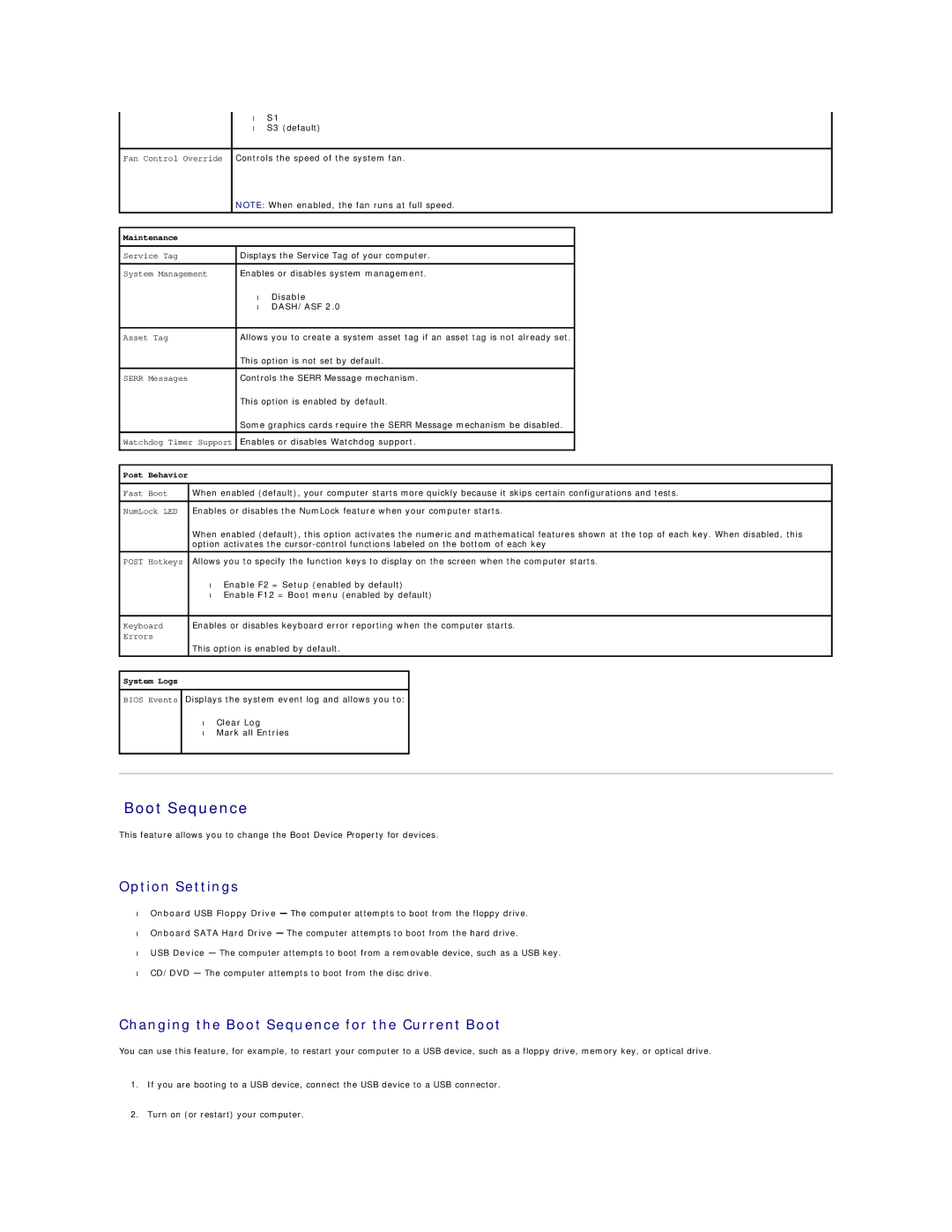
•S1
•S3 (default)
Fan Control Override Controls the speed of the system fan.
NOTE: When enabled, the fan runs at full speed.
Maintenance |
|
|
|
|
|
|
|
| |
Service Tag |
| Displays the Service Tag of your computer. |
| |
System Management | Enables or disables system management. |
| ||
|
| • | Disable |
|
|
| • | DASH/ASF 2.0 |
|
|
|
|
| |
Asset Tag |
| Allows you to create a system asset tag if an asset tag is not already set. |
| |
|
| This option is not set by default. |
| |
|
|
|
| |
SERR Messages |
| Controls the SERR Message mechanism. |
| |
|
| This option is enabled by default. |
| |
|
| Some graphics cards require the SERR Message mechanism be disabled. |
| |
|
|
|
| |
Watchdog Timer Support | Enables or disables Watchdog support. |
| ||
|
|
|
|
|
|
|
|
|
|
Post Behavior |
|
|
|
|
|
| |||
Fast Boot | When enabled (default), your computer starts more quickly because it skips certain configurations and tests. | |||
| ||||
NumLock LED Enables or disables the NumLock feature when your computer starts. | ||||
| When enabled (default), this option activates the numeric and mathematical features shown at the top of each key. When disabled, this | |||
| option activates the | |||
POST Hotkeys | Allows you to specify the function keys to display on the screen when the computer starts. | |||
•Enable F2 = Setup (enabled by default)
•Enable F12 = Boot menu (enabled by default)
Keyboard | Enables or disables keyboard error reporting when the computer starts. | |
Errors |
|
|
| This option is enabled by default. | |
|
|
|
|
|
|
System Logs |
|
|
|
|
|
BIOS Events
Displays the system event log and allows you to:
•Clear Log
•Mark all Entries
Boot Sequence
This feature allows you to change the Boot Device Property for devices.
Option Settings
•Onboard USB Floppy Drive — The computer attempts to boot from the floppy drive.
•Onboard SATA Hard Drive — The computer attempts to boot from the hard drive.
•USB Device — The computer attempts to boot from a removable device, such as a USB key.
•CD/DVD — The computer attempts to boot from the disc drive.
Changing the Boot Sequence for the Current Boot
You can use this feature, for example, to restart your computer to a USB device, such as a floppy drive, memory key, or optical drive.
1. If you are booting to a USB device, connect the USB device to a USB connector.
2. Turn on (or restart) your computer.
